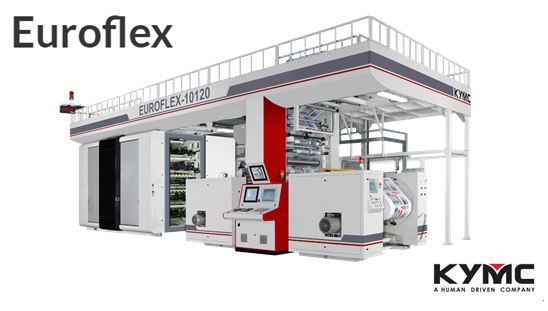Maximum productivity at minimum cost! Mid web and wide web flexographers want it all from any new press that gets installed in their plants. High on their lists of demands: quick-change features, waste management assets, open access to print decks and all componentry they hold. “Compact and capable” is the mantra. The mission: control, control, control.
Another three Cs—“connectivity, customization and color”—are carefully evaluated in pursuit of peak performance. Energy efficiency is seen as desirable; ease of materials handling, attractive. Automated features are built into the design and are directly linked to press uptime, quality output and customer satisfaction. They impact registration, impression, tension, washup, temperature control, defect detection, etc.
Recognizing flexography as a highly sensitive process, today’s converters pride themselves on efficiency and versatility and they expect the same from their presses. They calibrate or fingerprint machinery, yet stand ready to adapt at a moment’s notice and compensate for every variable that arises.
Business partners are acutely familiar with these printers’ daily challenges and tribulations. Engineers dedicate hour after hour to addressing new needs as they are identified. FLEXO Magazine set out to learn more about those evolving needs, so the magazine recently approached representatives from major original equipment manufacturer (OEM) and asked list out 10 features should consider when evaluating the purchase of a mid-web or wide web central impression press.
Quality Control
Setup and breakdown of every job is the key to saving both time and money. Standard features are now driving quality control and resulting in noticeable continuous improvement. That’s the position held by John Pan, general manager, Kuen Yuh Machinery Engineering Co., Ltd. (KYMC). He contends that, “Automation is boosting productivity.”
John uses that word in listing out 50 percent of the top 10 concerns to address in evaluating a potential press purchase.
- Auto-Register Control—a good and effective automatic pre-register control system can set all colors in register within 164-ft. (50-m.), as on an 8-color press
- Auto-Impression Control—good and effective auto-impression control should be able to set the impression for all colors within 656-ft. (200-m.), as on an 8-color press. Most importantly, it can set the desired impression from the operator’s determination, not the machine’s
- Auto Wash With Auto Ink Viscosity And Temperature Control—keeping ink under control is the key for quality print, therefore, ink viscosity and temperature control are equally important to the auto-wash system
- Drum Cleaner—the drum cleaner really saves the operator a great amount of time and is an important issue for quality print production
- Auto Defect Detection—100 percent full width defect detection certainly benefits uninterrupted quality control. It increases productivity through automatic print monitoring, reduces waste and complaints, and increases customer satisfaction
- Print and Anilox Sleeve System—the sleeve system is becoming standard on every modern press, yet customers should pay attention to the type of sleeve they are acquiring. It will affect the quality of printing and the life of the sleeve
- Auto Splice on Unwind and Rewind, And Reel Handling System—continuous running while orchestrating a reel change has become a challenge to the operator. He or she needs a system to help to load/unload the reel every 20 to 30 minutes easy and efficiently. Those systems include a trolley, lifting table, robot, etc.
- Energy Saving Drying System—a high-efficiency drying system is required on a high-speed press, yet it needs to be energy saving as well. Heat recovery and/or the use of an energy saving heating element/source are becoming standard on every modern press
- Hybrid Solution—thanks to the development of the electronic driving system, the link of post processes (finishing) on the press is no longer an issue. This includes: inline coating/lamination, inline digital printing, inline cutting/sheeting, inline bag making, etc.
- Ready for Industry 4.0—the CI flexo press must demonstrate interconnectivity, with major components monitored through any mobile device. It must also be able to connect to external management systems like APS, MES and ERP
John predicts the industrial production revolution will continue. “All printers should prepare themselves. The most basic principle in the new industrial revolution is that their equipment has the ability to connect with other equipment or systems through the network.”
Standing in Unison
Fast-change, quick-set, operator-friendly, quality-minded machinery is what every OEM FLEXO talked to says converters expect of their flexo press. Material-minded and considerably equipped with automated features is translating to faster, cheaper, better, more efficient print production.
The advent, arrival and acceptance of the integrated and optimized press is driving the principle of “control without compromise” with continuous improvement evident with each passing year.
Article Source: Flexographic Technical Association

